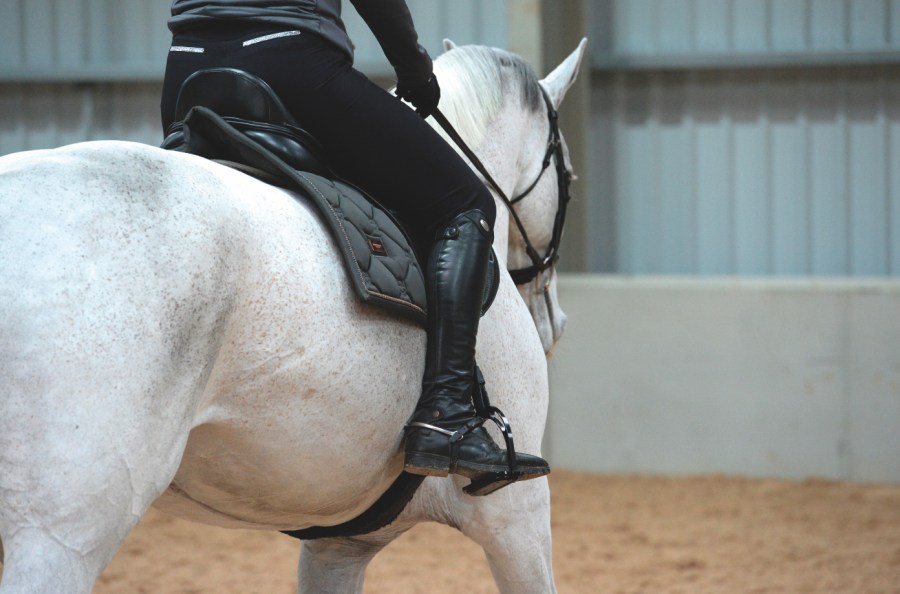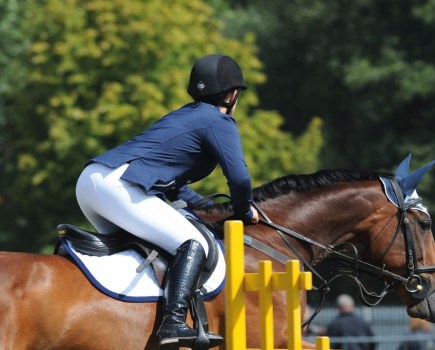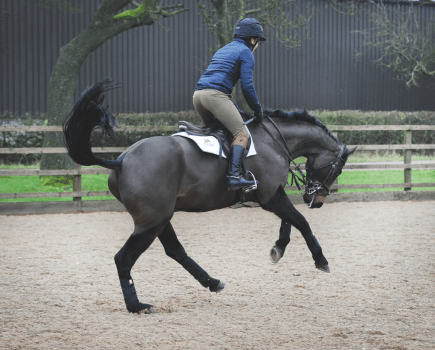Would you describe your horse as lazy? There are multiple reasons why your answer might be yes. Perhaps they are lacking fitness, being fed incorrectly for their workload, or bored in their work.
Maybe it’s a bigger training issue, with the horse not understanding what you are asking of them, being slow to respond to your leg aids, or in the habit of falling behind your leg. Of course, physical issues like tack fit and underlying health issues could also be a reason, so rule all of these things out first.
All horses are different. Some possess bags of talent, but as soon as you have to work a little bit harder to eek it out of them, they get described as being ‘lazy’.
The solution? Engaging their brain and inspiring them to be more forward from the off.
According to dressage rider Lili Brooksby Dalby, a British Dressage Level 2 trainer and Level 6 judge, it’s a case of channelling your horse’s energy into doing something fun, so that they don’t fall behind the leg and become unreactive to your aids.
Find their ‘on’ switch
When you’re warming up, keep things interesting. For example, ride lots of circles, serpentines and figures of eight; walk over poles on the ground and between tunnels of poles.
“As well as direct transitions (walk-trot, trot-canter, for example), ask for changes within the pace (such as collected canter to extended canter) and assess how your horse is reacting to your hand and leg aids,” advises Lili.
Is your horse switched off and lazy? If so, play around, find something they enjoy doing and focus on this. Get to know what works for your horse.
Stop niggling with your legs
When a horse is lazy, it’s easy to constantly use your legs against their sides. Once you’ve found the on switch, you need to make the horse’s reactions to your leg aids even better.
When you apply your leg, do you get an instant reaction or do they ignore you?
“If your horse is lazy and not in front of your leg, they’ll become brittle in the contact,” explains Lili.
“It’s easy with a lazy horse to get busy with your legs, but in fact they need to remain still so that when you do use them it really means something.”
Exercise:
- Divide your leg aids into three categories: (1) a gentle touch, (2) a squeeze and (3) a kick.
- Whenever you use your legs, start with stage one (a gentle touch).
- If your horse ignores you, move on to stage two (squeeze), and so on.
Sharper transitions
Lili’s top tip is to pick a certain point to make a transition. This might be when you cross the centre line in your arena, or at a certain post when schooling in a field, or when you reach a certain tree out hacking. Doing this will help you ride precisely.
Exercise:
- In trot, ride a three-loop serpentine, asking for a transition to walk each time you cross the centre line.
- Walk for a few strides and then pick up trot again.
- Control the rhythm and be assertive: decide where you want the transition to happen, prepare for it and be precise.
- Next, ask for walk to trot transitions on a circle, trotting for a few metres each time.
- The more you practise, the sharper your horse’s reactions will become.
- Grade your leg aids as in exercise two, always starting with the lightest touch.
- Horse starting to anticipate? Relax! “This is a good thing in my opinion,” says Lili, “as it’s less work for you”.
Your contact
As well as accurate transitions, your horse needs to be working in a consistent frame and contact.
“Begin by trotting on a circle, moving up and down the gears within the pace,” says Lili. “Again, grade your leg aids, always starting with the lightest touch, and as your horse goes bigger and moves into medium trot, give with your reins to allow him forwards.”
Exercise:
- Ride a 20m circle in trot, making regular changes of pace within the gait.
- Constantly check how your horse is reacting to your leg, and adapt the aid accordingly if they’re being lazy.
- Progress to walk-to-canter transitions on a circle.
- Practise going up and down through the gears in canter, as you did in trot.
- Collect the canter, for a smaller but active step. Think ‘small, short, round, bouncy’.
- Play around and go from collected to extended canter, and from collected canter to walk.
- Move on to riding simple changes on a serpentine.
- Ask for a canter-walk-canter transition each time you cross the centre line.
- If your horse feels a little heavy in your hands on the transition to walk, ask for a few steps of rein-back and then move forwards again.
With all of these exercises, make sure you ride them evenly on both reins. You need to be consistent too.
Don’t ask your horse to be reactive to your aids one day, and then let them be sluggish to respond the next.
Horses learn by repeatedly doing the same thing, so it’s your job to get them going forward away from your legs every time you ask.
All horses are different
A bit like people, some horses simply have more enthusiasm for working that others. My sister and I once rode ‘matching’ dark bays, who looked very similar but were polar opposites in other ways.
The tiniest squeeze with your legs would send Classic forward, and he would tow you into a fence. Marcus, meanwhile, was more ‘whoa’ than go.
Marcus often got called lazy. He wasn’t really — he just needed riding differently to Classic. When the latter horse was cantering on the spot and leaping around because he wanted to go faster, Marcus would be alongside calmly walking on a loose rein.
But while Marcus came out of a cross-country startbox a little ‘stuffy’, prompting a strong leg all the way to the first fence, Classic zoomed from the word ‘go’.
So the next time you feel your horse is being lazy, stop and think. Why might they be being this way?
Look for ways to inspire them, get to know what they like, and learn to ride them in a way that gets the best from you both.
That’s what I did with Marcus — and he was one of the best horses I’ve ever had.








